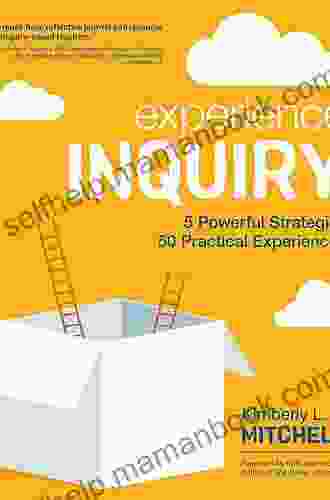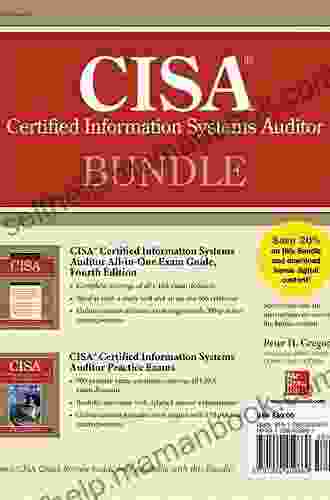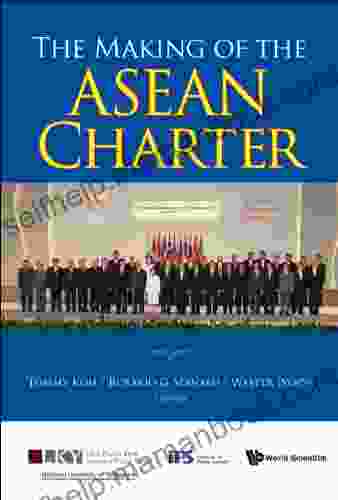The Making of the ASEAN Charter: The Formula One Maths

4.7 out of 5
| Language | : | English |
| File size | : | 2922 KB |
| Text-to-Speech | : | Enabled |
| Screen Reader | : | Supported |
| Enhanced typesetting | : | Enabled |
| Word Wise | : | Enabled |
| Print length | : | 256 pages |
The ASEAN Charter is a landmark agreement that was signed by the leaders of the Association of Southeast Asian Nations (ASEAN) on 15 December 2008. It came into force on 15 December 2015 and has been hailed as a major step forward in the integration of the region.
However, the process of drafting and negotiating the Charter was a complex and challenging one, which involved a great deal of political maneuvering and compromise. This article explores the making of the ASEAN Charter, with a particular focus on the role of mathematics in the process.
The Formula One Maths
One of the most striking features of the ASEAN Charter is its use of mathematics in the drafting process. This is particularly evident in the Charter's preamble, which sets out the principles and objectives of the organization.
The preamble states that ASEAN is committed to "promoting peace, stability, economic growth, and social progress in the region." It also states that ASEAN is committed to "strengthening democracy, human rights, and the rule of law in the region." These principles and objectives are then translated into a series of more specific goals and targets, which are set out in the Charter's subsequent articles.
The use of mathematics in the drafting process was intentional. The ASEAN leaders wanted to create a document that was clear, concise, and easy to understand. They also wanted to create a document that was flexible enough to accommodate the changing needs of the region.
The use of mathematics helped the ASEAN leaders to achieve these goals. The preamble's principles and objectives are clearly and concisely stated, and the subsequent articles provide a detailed roadmap for the organization's future development.
The Role of Mathematics in the Negotiation Process
Mathematics also played a role in the negotiation process. The ASEAN leaders used mathematics to help them find common ground and reach consensus on a number of difficult issues.
For example, the ASEAN leaders used mathematics to determine the number of votes that each member state would have in the ASEAN Coordinating Council. They also used mathematics to determine the size of the ASEAN Secretariat and the budget of the organization.
The use of mathematics helped the ASEAN leaders to overcome their differences and reach agreement on a number of important issues. This was a major factor in the successful negotiation of the Charter.
The ASEAN Charter is a landmark agreement that has helped to strengthen regional cooperation and integration. The use of mathematics in the drafting and negotiation process was a major factor in the success of the Charter.
Mathematics provided the ASEAN leaders with a clear and concise framework for their discussions. It also helped them to find common ground and reach consensus on a number of difficult issues.
The ASEAN Charter is a testament to the power of mathematics to help us solve complex problems and build a better future.
4.7 out of 5
| Language | : | English |
| File size | : | 2922 KB |
| Text-to-Speech | : | Enabled |
| Screen Reader | : | Supported |
| Enhanced typesetting | : | Enabled |
| Word Wise | : | Enabled |
| Print length | : | 256 pages |
Do you want to contribute by writing guest posts on this blog?
Please contact us and send us a resume of previous articles that you have written.
 Top Book
Top Book Novel
Novel Fiction
Fiction Nonfiction
Nonfiction Literature
Literature Paperback
Paperback Hardcover
Hardcover E-book
E-book Audiobook
Audiobook Bestseller
Bestseller Classic
Classic Mystery
Mystery Thriller
Thriller Romance
Romance Fantasy
Fantasy Science Fiction
Science Fiction Biography
Biography Memoir
Memoir Autobiography
Autobiography Poetry
Poetry Drama
Drama Historical Fiction
Historical Fiction Self-help
Self-help Young Adult
Young Adult Childrens Books
Childrens Books Graphic Novel
Graphic Novel Anthology
Anthology Series
Series Encyclopedia
Encyclopedia Reference
Reference Guidebook
Guidebook Textbook
Textbook Workbook
Workbook Journal
Journal Diary
Diary Manuscript
Manuscript Folio
Folio Pulp Fiction
Pulp Fiction Short Stories
Short Stories Fairy Tales
Fairy Tales Fables
Fables Mythology
Mythology Philosophy
Philosophy Religion
Religion Spirituality
Spirituality Essays
Essays Critique
Critique Commentary
Commentary Glossary
Glossary Bibliography
Bibliography Index
Index Table of Contents
Table of Contents Preface
Preface Introduction
Introduction Foreword
Foreword Afterword
Afterword Appendices
Appendices Annotations
Annotations Footnotes
Footnotes Epilogue
Epilogue Prologue
Prologue Kimberly L Mitchell
Kimberly L Mitchell Rachel Menard
Rachel Menard Martial
Martial Abbi Waxman
Abbi Waxman Madison Moulder
Madison Moulder Jason Aaron
Jason Aaron Nekesa Ouma Namulu
Nekesa Ouma Namulu Carol Ann Duffy
Carol Ann Duffy Vincent Alexandria
Vincent Alexandria Jessie Kelley
Jessie Kelley Huan Liu
Huan Liu Paul Crickard Iii
Paul Crickard Iii Gerard Shaw
Gerard Shaw India Millar
India Millar Kamel Sadi
Kamel Sadi V R Christensen
V R Christensen Kindle Edition
Kindle Edition Maggie Sokolik
Maggie Sokolik Naomi Judd
Naomi Judd Sheldon Cole
Sheldon Cole
Light bulbAdvertise smarter! Our strategic ad space ensures maximum exposure. Reserve your spot today!

 Dustin RichardsonPowerful Strategies: 50 Practical Experiences for Transformative Teaching
Dustin RichardsonPowerful Strategies: 50 Practical Experiences for Transformative Teaching Darren BlairFollow ·19.4k
Darren BlairFollow ·19.4k Bruce SnyderFollow ·3.5k
Bruce SnyderFollow ·3.5k Jackson BlairFollow ·14.5k
Jackson BlairFollow ·14.5k Mike HayesFollow ·10.2k
Mike HayesFollow ·10.2k Davion PowellFollow ·17.9k
Davion PowellFollow ·17.9k Dave SimmonsFollow ·14.2k
Dave SimmonsFollow ·14.2k Kenzaburō ŌeFollow ·3.9k
Kenzaburō ŌeFollow ·3.9k Devin RossFollow ·6k
Devin RossFollow ·6k

 Boris Pasternak
Boris PasternakThe Misted Mirror: Mindfulness for Schools and...
What is The Misted...

 Holden Bell
Holden BellEmbark on Thrilling Adventures in the Uncharted Depths of...
Unveiling the Enchanting...

 Seth Hayes
Seth HayesDelphi Complete Works of Lucan: Illustrated Delphi...
This meticulously edited...

 Jackson Hayes
Jackson HayesThe Enigmatic Cat Burglar: Unraveling the Intriguing...
In the annals of crime, the name Bernie...

 Quentin Powell
Quentin PowellAligned With The Cisa Review Manual 2024 To Help You...
The CISA Review Manual 2024 is the most...

 Austin Ford
Austin FordUnlocking Revenue Potential: A Comprehensive Business...
In today's digital...
4.7 out of 5
| Language | : | English |
| File size | : | 2922 KB |
| Text-to-Speech | : | Enabled |
| Screen Reader | : | Supported |
| Enhanced typesetting | : | Enabled |
| Word Wise | : | Enabled |
| Print length | : | 256 pages |










